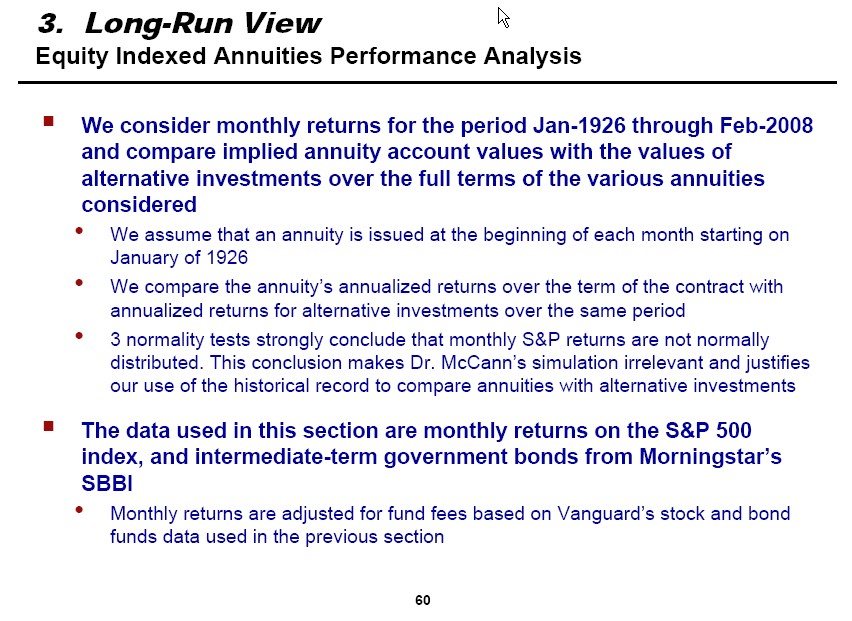The first part of Professor Babbel's presentation looked at the comparative performance of fixed indexed annuities and alternative investments over a 15 year period.
This next set of slides looks at performance over a much longer time period--dating back to January 1926.
The implied account values of the 9 year and 14 year fixed indexed annuities are again compared to the alternative investments:


A previous study by Dr. Craig McCann had looked at fixed indexed annuities versus alternative investments and found that the alternatives beat the annuities most of the time:

However, Dr. McCann's study is based on an assumption that asset returns are normally distributed.
Professor Babbel's view is that asset returns are not at all normally distributed. This key assumption leads to very different performance results in Professor Babbel's study, with the annuities outperforming the alternative investments much of the time over the long-run:

The following slides capture some of Professor Babbel's logic and argument around the statistical distribution of asset returns. Again, Professor Babbel's view is that it is not appropriate to assume that asset returns are normally distributed. As indicated in the slides above, this view has a significant impact on the comparative performance of the fixed indexed annuities over time.




- tom's blog
- Log in to post comments


Comments
Anonymous replied on Permalink
leptokurtotic distribution
I am confused. Doesn't a leptokurtotic or LaPlace distribution suggest that that more "higher positive returns" will live near the mean ... as the historical S&P monthly returns indicate?
To me that would strengthen Dr.McCann's conclusion. What piece am I missing?
Dave Babbel replied on Permalink
Yes. A leptokurtotic
Yes. A leptokurtotic distribution has relatively more weight than a normal distribution in observations in the "neck region" near the mean. However, it has much less weight in the "shoulder" region and much more weight in the tails. It is in these tails, where actual returns fall about twice as frequently as assumed in a normal distribution, where the attractive return from index annuities is generated.